Key Takeaways
- Shop Smart: Stay informed about the dynamics of food pricing and use this knowledge to shop smarter. Buying in bulk, choosing store brands, and taking advantage of sales and coupons can lead to significant savings.
- Meal Planning: Planning your meals for the week and making a detailed grocery list can help reduce impulse buys and ensure you’re only purchasing what you need. This minimizes waste and helps keep the grocery bill low.
- Focus on Nutritious, Affordable Foods: Incorporating the 57 cheapest foods identified into your diet can lead to healthier meals without stretching your budget. Foods like beans, rice, and seasonal vegetables provide essential nutrients while keeping costs down.
Introduction to Cheapest Food to Buy
With the rising costs and constantly fluctuating prices of groceries, it can be difficult to get the food you need on a budget. No wonder many people are looking for ways to save money on food and seek out the cheapest food to buy.
In this blog post, I’ll explore the 57 cheapest food to buy that are rich in nutrients, so you can eat healthy and affordably on your next visit to the grocery store!
Finding the Cheapest Food to Buy
Understanding the importance of finding the cheapest foods can be invaluable for stay-at-home moms who aim to provide nutritious meals for their families without overspending.
Recognizing the significance of seeking out the most affordable food options can be immensely valuable for mothers striving to offer nourishing meals for their families without exceeding their budgets.
You can save this post by bookmarking on Pinterest!:
I’m going to explain how paying attention to where you shop and what you buy can save you time, money, and most importantly stress when it comes to feeding your family!
Factors That Affect Food Prices
Several factors play a role in determining the price of food, from the cost of transportation to the price of raw materials.
One major factor in the price of food is weather patterns and conditions and their impact on crop yields. Natural disasters such as droughts or floods can cause a significant reduction in crop production, leading to scarcity and increased prices.

In addition, government policies such as import and export regulations, tariffs, and subsidies can also affect prices.
It’s important to consider these factors when making decisions about purchasing groceries and to be aware of the impact they have on the overall cost of living.
While opting for the least expensive foods may appear to be a wise strategy for reducing grocery expenses, it’s crucial to also evaluate their nutritional content for a wholesome and well-rounded diet.
How Factors Affect the Price of Food
The price of food can be influenced by a variety of factors including supply and demand, location, seasonality, and packaging. The law of supply and demand is a fundamental principle that dictates the availability of products and their price.
As the demand for a certain food item rises, its price increases as well. Additionally, location plays a significant role in food pricing. The cost of transportation and storage can add to the overall cost of the item.
Furthermore, seasonality impacts pricing as certain foods are only available during certain times of the year. Lastly, packaging can add to the cost of a food item. More expensive packaging can result in a higher price for the consumer.
Understanding these factors is crucial when considering the cost of food and making informed purchasing decisions.
Strategies for Finding the Cheapest Food to Buy
It’s important to have the knowledge and tools necessary to find the cheapest groceries we can. One way to do this is to compare prices at different stores or online retailers or use a grocery app.
Another option is to use coupons or discount codes to get a better deal. Additionally, researching the quality of products and considering alternatives can help save money in the long run.
Another helpful tip is to wait for sales or make purchases during off-seasons when prices are typically lower.
By utilizing these strategies, you can find cheaper options without sacrificing quality or value.
Related post: How to Save Money on Groceries Without Coupons: 28 Ways
Cheapest Food Groups
When it comes to eating healthy, many people believe that it can also be expensive. However, there are plenty of low-cost food groups that provide essential nutrients and fuel for our bodies.
One of the cheapest food groups is grains, which can be found in different kinds of rice, pasta, and bread. Legumes, such as lentils and beans, are also an excellent affordable source of protein and fiber.
Our grandparents knew this stuff. Check out more of what they knew in my post, “Frugal Tips of the Great Depression: Today’s Wisdom“.

Fresh vegetables and fruits may seem expensive, but they are often cheaper when in season and can easily be bought frozen. Dairy, including milk and cheese, can also be found at affordable prices.
Finally, protein sources like eggs and canned tuna are cost-effective and convenient options. With a little bit of planning, eating nutritious food doesn’t have to break the bank.
57 Cheapest Foods to Buy
Here are the 57 cheapest food to buy, organized by food group:
Grains:
Grains such as rice, oats, and pasta are versatile and budget-friendly options. Here are some of the cheapest grains you can buy:
1) Rice
Rice is a staple food for more than half of the world’s population and probably one of the cheapest foods around. Whether you’re in the mood for a stir-fry, a casserole, or sushi, the possibilities are endless with rice as your base.
2) Oats
Oats are another one of the cheapest foods there is. With a hearty texture and subtle flavor, oats make a delicious breakfast staple and can also be used in a variety of savory dishes.
3) Pasta
Pasta comes in countless shapes, sizes, and flavors to choose from. There are many recipes that use different types of noodles that even novice cooks can master.
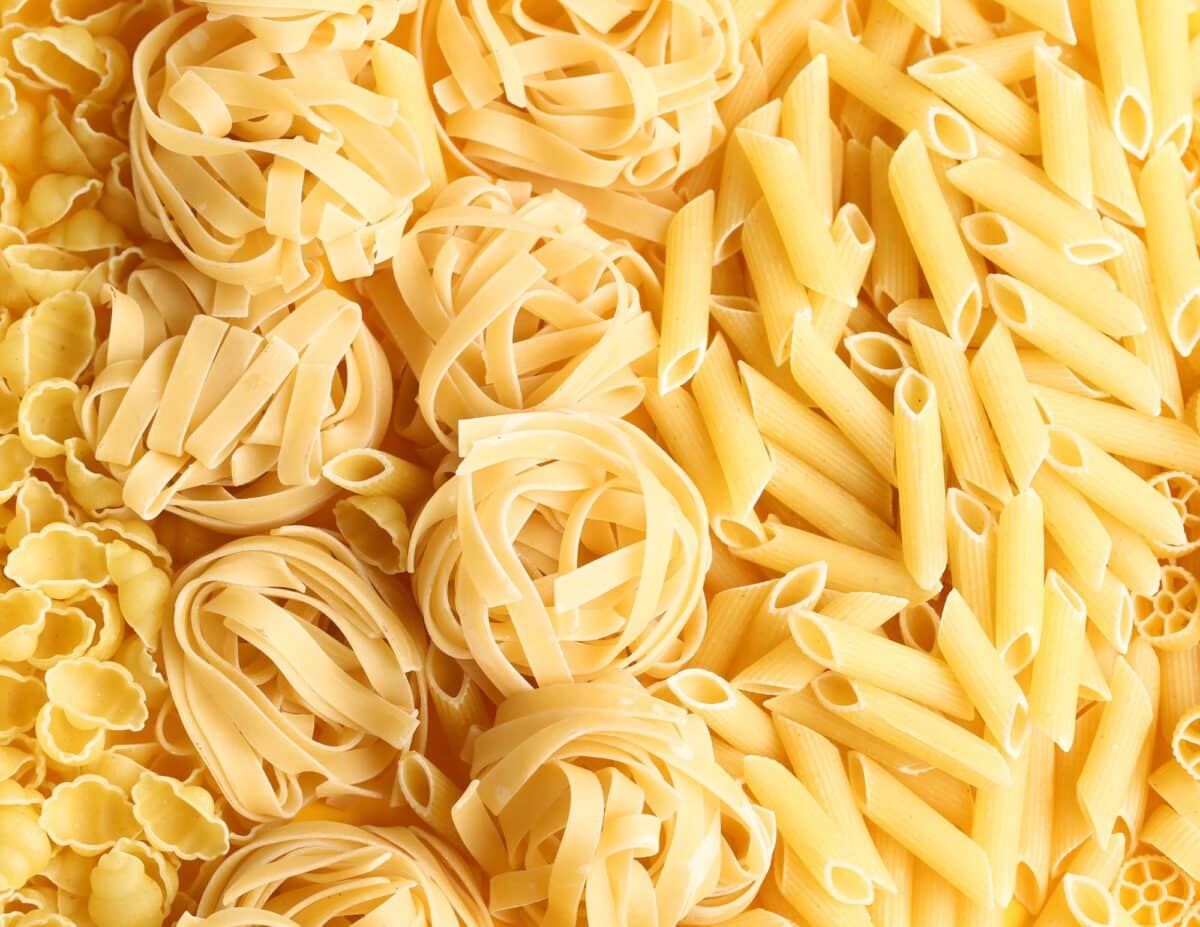
4) Cornmeal
Cornmeal is a pantry item that can be used in savory and sweet dishes alike. It’s naturally gluten-free and can be incorporated into many gluten-free recipes.
5) Barley
Barley has been used for diverse purposes globally for thousands of years. Barley can be utilized in dishes such as stews, cereals, soups, and even desserts.
6) Quinoa
Quinoa is a grain-like crop that has been gaining popularity. If you’re looking to experiment with a new addition to your pantry, consider giving quinoa a try!
Legumes:
Legumes are a great source of protein and can be used in many dishes. Here are some of the cheapest legumes you can buy:
7) Lentils
Lentils are packed with protein, fiber, and a host of vitamins and minerals. They are a favorite ingredient in vegetarian recipes.
8) Chickpeas
Chickpeas, are small, round beans. They are also sometimes called garbanzo beans. They can be enjoyed in a variety of ways, from being roasted as a crunchy snack, to being added to salads, soups, stews, and curries. They can also be mashed to make hummus.
9) Black Beans
Black beans have dark and glossy skin and a creamy interior. A great way to use black beans is in tacos, burritos, and rice and beans.
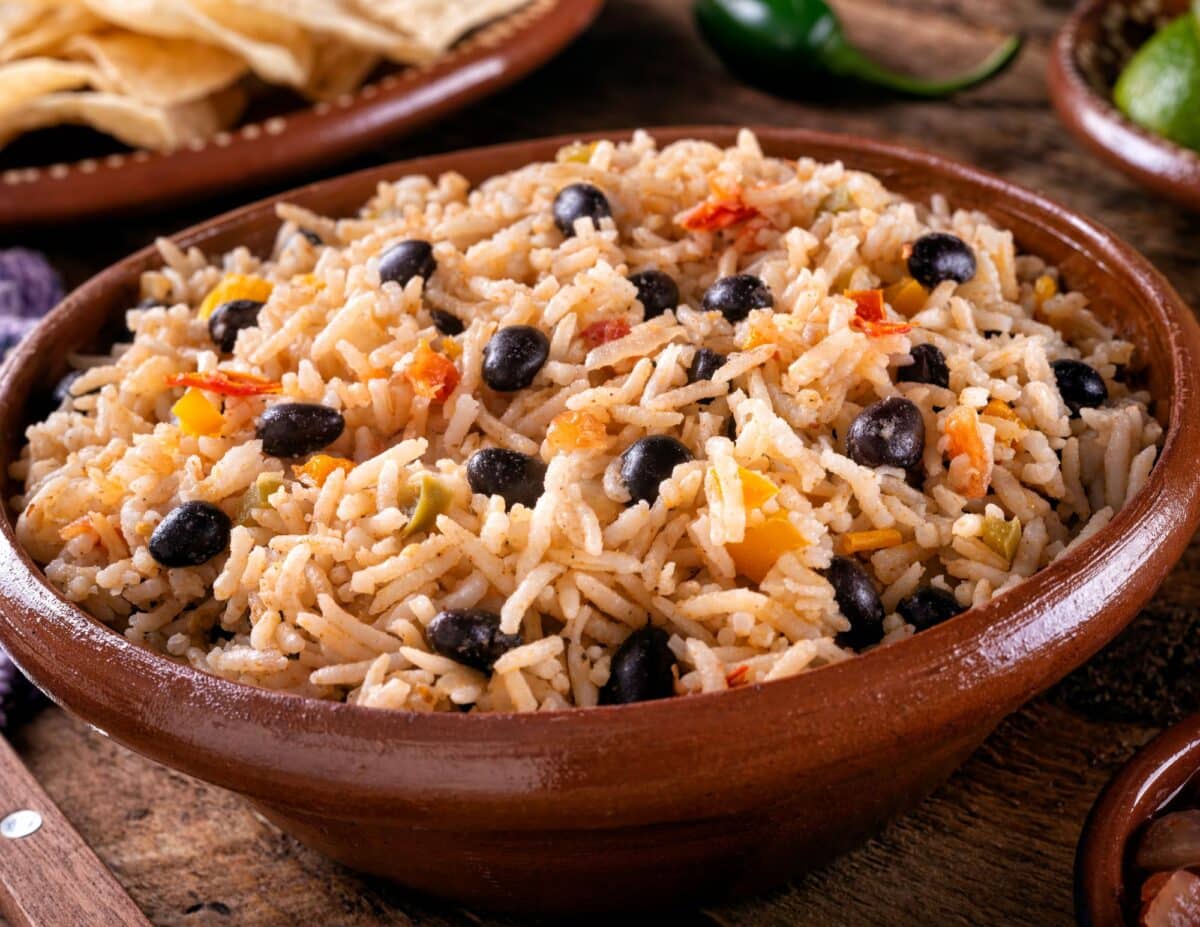
10) Kidney Beans
Kidney beans are kidney-shaped beans that come in various colors, including red, black, and white and are commonly used in dishes such as chili, salads, and soups. They are also a staple in many traditional cuisines around the world.
11) Navy Beans
Navy beans are known for their creamy texture and mild, nutty flavor. These small, oval-shaped beans can be used as a great addition to soups, stews, salads, and dips.
12) Pinto Beans
Pinto beans are little beans that are low in fat and make a great addition to anyone’s diet. They can be used in a variety of dishes, including burritos, tacos, and chili.
13) Split peas
Split peas come in various colors, ranging from green and yellow to reddish-brown, and are often used in soups and stews. They are a great source of protein, fiber, and other nutrients.
Fruits and Vegetables:
In addition to the protein-packed legumes listed above, many fruits and vegetables provide a good amount of protein. Some examples of the cheapest fruit and vegetables include:
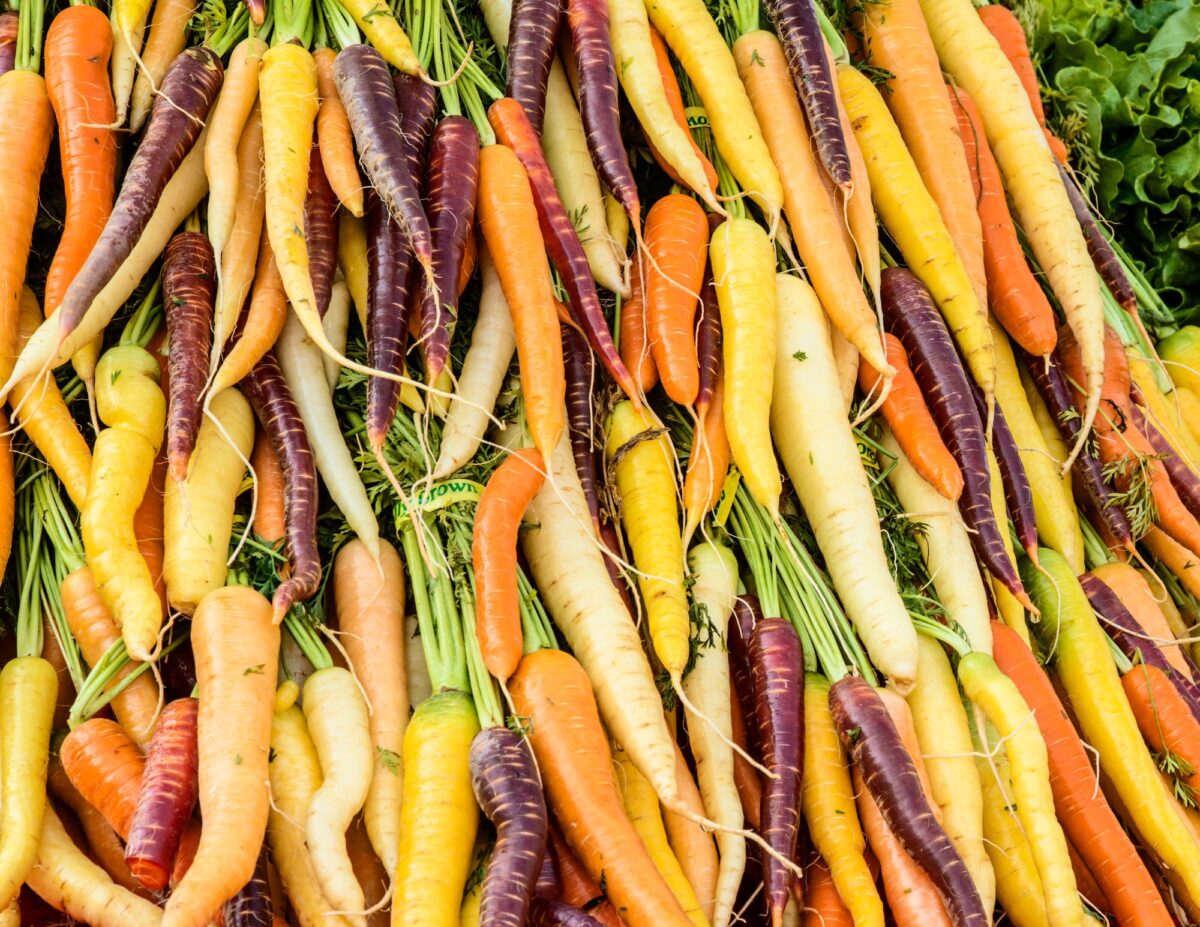
15) Cabbage
Cabbage, a leafy vegetable, is one of the healthiest and most nutritious foods available. Cabbage is known for its cancer-fighting properties due to the antioxidants it contains.
16) Onions
Onions come in various types, colors, and sizes, from small shallots to giant Spanish onions. They are used in countless dishes and can be cooked, roasted, grilled, or eaten raw.
17) Potatoes
Potatoes are one of the cheapest foods you can find. They can be prepared in a variety of ways, such as baked potatoes. Numerous potato dishes can be prepared using roasted, boiled, or mashed potatoes.
18) Sweet Potatoes
Sweet potatoes are tasty tubers rich in vitamins A and C, as well as fiber and potassium. They can be baked, roasted, mashed, fried, or even used in desserts.
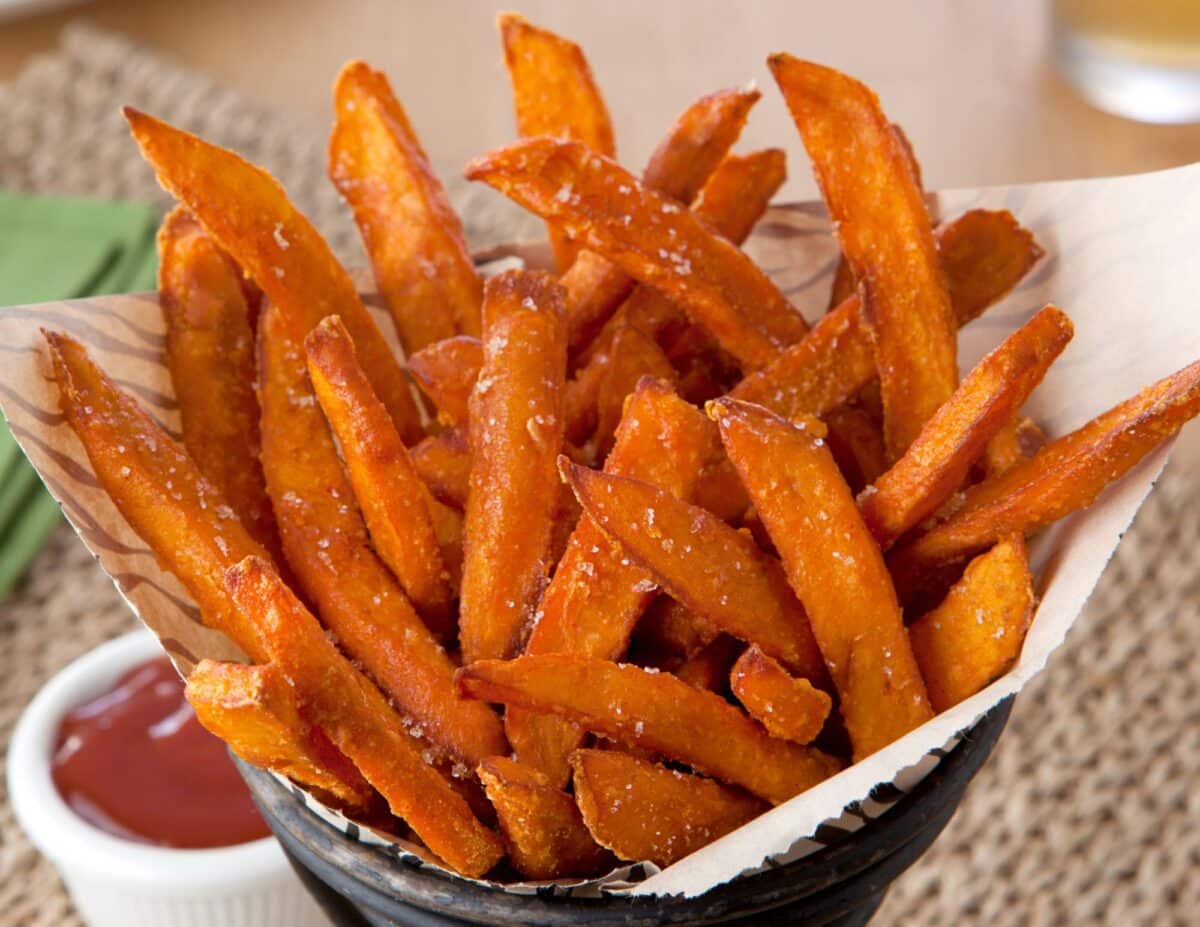
19) Turnips
Turnips are low in calories and high in nutrients, fiber, and potassium. With a slightly sweet and earthy taste, turnips can be roasted, mashed, pickled, or boiled until tender.
20) Beets
Beets are a popular root vegetable known for their rich, deep color and earthy flavor. They can be enjoyed in a variety of ways, from roasted or boiled to pickled or grated over salads.
21) Butternut Squash
Butternut squash has a sweet and nutty flavor that makes it a great addition to soups, stews, and roasted vegetable medleys. Butternut squash is rich in vitamin A, C, and potassium.
22) Zucchini
Zucchini can be eaten raw, cooked, or baked and can be used in a variety of dishes like salads, pasta, and stir-fries. Zucchini is a great source of vitamin C, B6, and manganese.

23) Green Beans
Green beans come in many different varieties, including the popular pole and bush beans. They can be lightly steamed, grilled, or roasted for a healthy side dish, or added to soups and stews for a hearty and nutritious meal.
24) Peas
Peas are small green legumes that are low in calories but high in protein, fiber, and a variety of vitamins and minerals. They can be enjoyed fresh or frozen and added to soups, salads, and stir-fries for a burst of flavor and nutrition.
25) Canned Tomatoes
Canned tomatoes are a convenient and affordable way to add a pop of flavor to your dishes. These red gems are rich in antioxidants and vitamins, and potassium, making them a healthy addition to any meal.
26) Frozen Mixed Vegetables
Frozen mixed vegetables offer a convenient and healthy option for those looking to incorporate more vegetables into their diet. These frozen vegetables typically include a variety of veggies such as carrots, peas, green beans, and corn.
27) Bananas
Bananas are delicious, but they’re also packed with important nutrients like potassium, and fiber. Bananas make a great cheap healthy snack. Bananas can also be used in smoothies. You can also make banana bread from ripe bananas.
28) Apples
Apples are one of the most widely consumed fruits in the world, according to Harvard University. Apples are high in fiber, which can help aid digestion and promote weight loss.
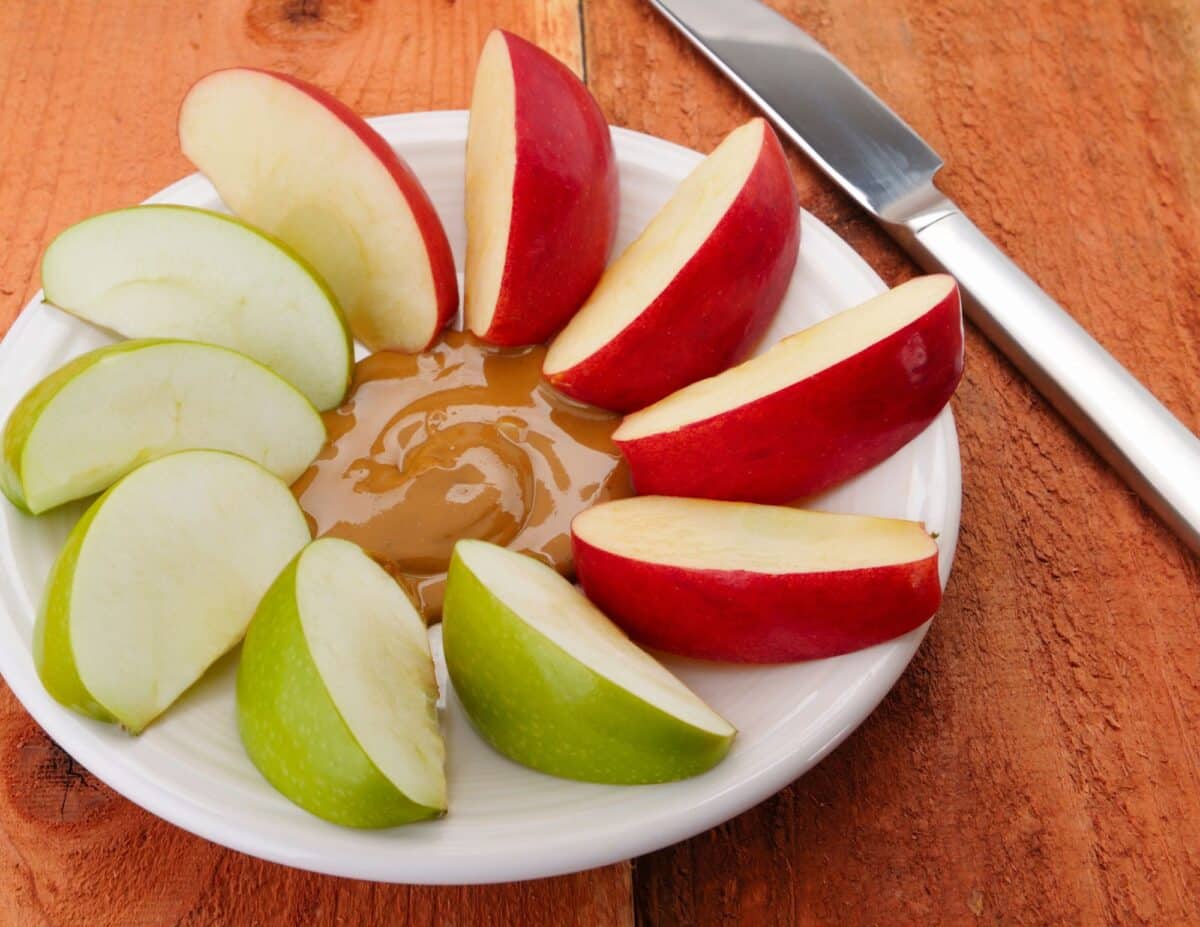
Related post: What to Do with Excess Apples: Creating Culinary Magic
29) Oranges
Oranges have just the right amount of sweet and tart flavors that make them a favorite among fruit lovers. Oranges are a great source of vitamin C, which is essential in building a strong immune system, fighting off infections, and providing anti-inflammatory effects.
30) Grapefruit
Grapefruit is a citrus fruit that is loved by many for its unique and tangy flavor. According to Very Well Fit, one medium-sized grapefruit contains about 64% of our daily recommended intake of vitamin C, which is crucial for boosting our immune system and keeping us healthy.
31) Lemons
Lemons are packed with many health benefits. Lemons can strengthen the immune system, reduce inflammation, and aid in digestion.
32) Limes
Limes are known for their tart flavor and vibrant green color. Typically smaller than lemons, limes can be found in grocery stores year-round and are widely used in cooking and cocktails.
33) Frozen Berries
Frozen berries are convenient whether you’re making a smoothie or adding them to your morning oatmeal. frozen fruit is a great option because they are picked at peak ripeness and then quickly frozen, locking in all the nutrients.
34) Canned Pineapple
Canned pineapple is a widely popular option for those who enjoy the sweet and tangy taste of this tropical fruit. Canning allows for the pineapple to be preserved for a longer period, making it easier to access and enjoy throughout the year.
35) Celery
Celery is a crunchy, low-calorie vegetable rich in vitamins and minerals, including vitamin K, folate, and potassium. Celery also contains antioxidants that may contribute to its potential health benefits, such as reducing inflammation and improving heart health.
36) Bell Peppers
Bell peppers, also known as sweet peppers, come in a variety of colors like red, green, orange, and yellow. Stuffed peppers are a popular dish and make for a delicious side or main meal.

38) Broccoli
Broccoli is a vegetable that’s often touted for its nutritional benefits, and for good reason. This green vegetable is packed with vitamins and minerals that are essential for a healthy diet.
39) Cauliflower
Cauliflower is low in calories but high in fiber, and antioxidants. Its neutral taste and texture make it an excellent substitute for rice or potatoes, particularly for those on a low-carb or gluten-free diet.
40) Cucumber
Cucumbers are versatile and refreshing, perfect for many dishes. Cucumbers can be sliced and added to salads, sandwiches, or wraps for a crunchy texture and fresh taste.
41) Tomatoes
Tomatoes are a versatile and beloved fruit that is commonly found in many households. They come in various shapes, sizes, and colors such as red, yellow, and green. They can be eaten raw or cooked and add a distinct flavor to many dishes such as salads, sandwiches, pasta sauce, and pizzas.
42) Avocado
Avocados are a creamy fruit that is packed with healthy fats, fiber, and vitamins, making them a favorite among health-conscious eaters. They can be enjoyed on their own, mashed into guacamole, or added to salads and sandwiches for a creamy texture and delicious flavor.
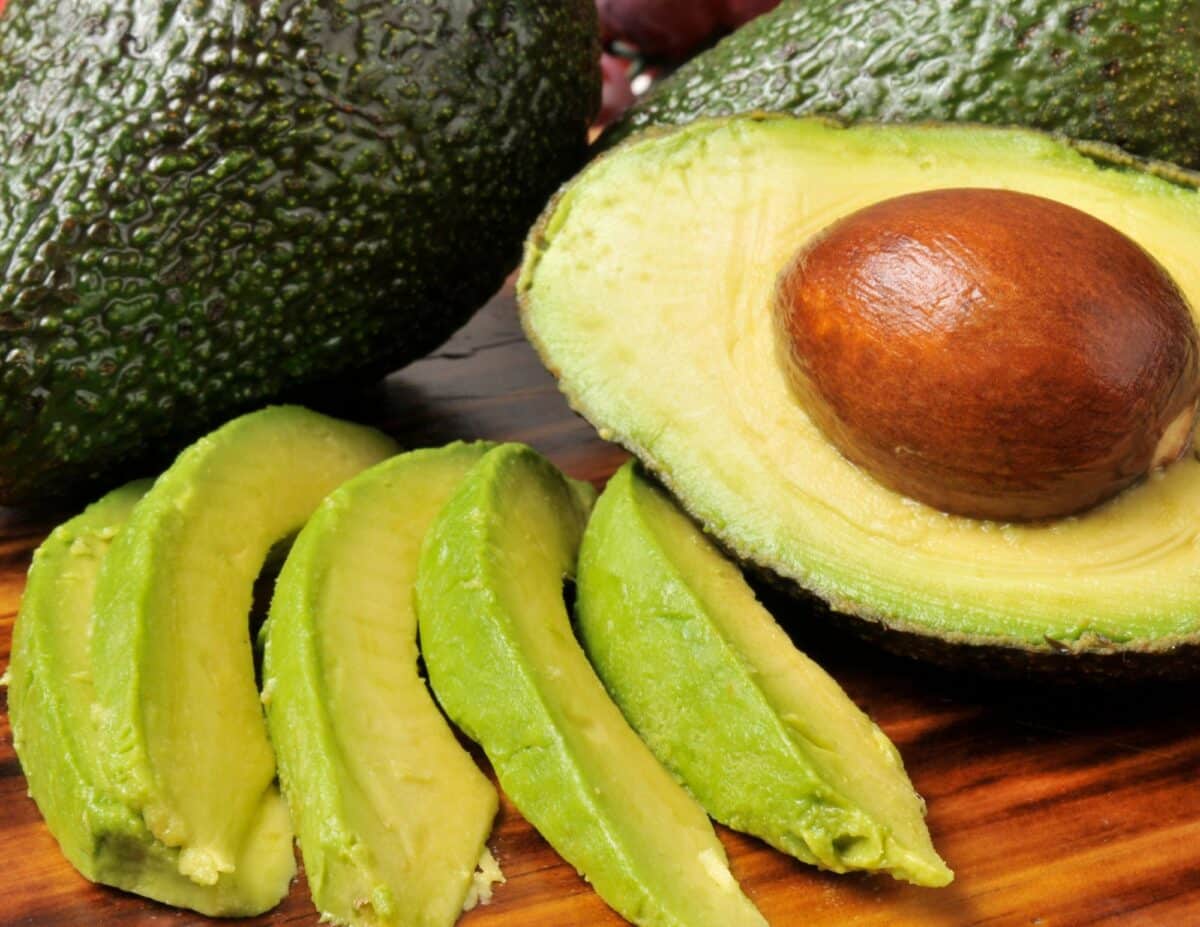
Dairy:
Dairy products are a staple in many households and are a good source of calcium, protein, and nutrients. Some popular dairy products include milk, cheese, yogurt, and butter. However, for those who are lactose intolerant or following a vegan diet, there are also non-dairy alternatives available such as almond milk, coconut yogurt, and cashew cheese.
43) Milk
Milk is a vital component of numerous diets, serving as a crucial ingredient in various recipes, including baking and cooking. Its versatility makes it a delightful addition to meals or as a standalone beverage, complementing a wide range of foods.
44) Yogurt
Yogurt is a popular dairy product made by fermenting milk with live bacteria cultures, giving it its familiar tangy taste and creamy texture. Plain yogurt with some fruit added makes an easy, quick snack.
45) Cottage Cheese
Cottage cheese is a versatile dairy product that has a uniquely lumpy texture due to its curdled nature. I like to use it ground up and added to my lasagna as a frugal substitute for ricotta cheese.
Protein:
Protein is an essential macronutrient that helps build and repair tissues in the body. It is found in many different foods, including meat, poultry, fish, eggs, dairy products, beans, nuts, and seeds. Incorporating protein into your diet provides your body with the necessary building blocks for maintaining muscle and overall health.
46) Eggs
Eggs are a healthy food that can be prepared in numerous ways to suit different tastes. They can be fried, poached, or boiled and are commonly necessary for baking. Scrambled eggs can be enjoyed for breakfast or make a great sandwich for an easy cheap lunch idea.

47) Canned Tuna
Canned tuna is one of the cheapest canned fish. It can be used for a variety of dishes, from tuna sandwiches to pasta salads. Not only is it convenient and readily available year-round, but canned tuna is also a good source of omega-3 fatty acids, which are essential for maintaining good heart health.
48) Chicken Thighs
Chicken thighs are one of the most versatile cuts of chicken. Not only are they rich in flavor and juicier than other parts of the chicken, but they are also incredibly affordable.
Related post: Raising Meat Chickens In Your Own Backyard With Success
49) Ground Beef
Ground beef is a versatile ingredient that has become a staple in many households. It’s made by grinding meat from different parts of the cow and can be found in varying percentages of fat content.
50) Pork Shoulder
Pork shoulder is a flavorful, tender meat. Also known as pork butt, this cut comes from the upper part of the pig’s shoulder and is often marbled with fat, which helps to keep the meat juicy and tender when cooked slowly over low heat.
51) Tofu
Tofu, also known as bean curd. Tofu is an excellent source of protein, iron, and calcium. It is made from soybeans and is a popular ingredient in vegetarian and vegan diets. Tofu can be used as a meat substitute in many dishes, such as stir-fries and sandwiches.
Nuts and Seeds:
Nuts and seeds are a great addition to any diet as they are loaded with essential nutrients and have numerous health benefits. They are rich in protein, healthy fats, fiber, vitamins, and minerals. Incorporating nuts and seeds into your meals can help improve heart health, reduce inflammation, and aid in weight management.
52) Peanut Butter
Peanut butter is a beloved food that delights many palates. This creamy spread is crafted mainly from ground peanuts, often blended with oil and salt for a delectable taste.
53) Almonds
Almonds are a nutrient-dense food that has gained popularity in the health and wellness communities. Almond butter is a great substitute that I love to use for peanut butter. Not only are they a good source of protein, fiber, and healthy fats, but they also contain important vitamins and minerals.

54) Sunflower Seeds
Sunflower seeds have remained a beloved snack for millennia, enjoyed across cultures. Cultivated extensively, they offer diverse options like plain, salted, roasted, and flavored varieties, serving as a simple yet nutritious snack choice.
55) Pumpkin Seeds
Pumpkin seeds are an excellent source of protein, healthy fats, and minerals such as zinc and magnesium. Just a quarter cup of pumpkin seeds can provide up to half of the recommended daily intake of magnesium.
Bread:
Bread is a staple food in many cultures and is made from various grains such as wheat, barley, and rye. It comes in different forms and can be found in almost every household pantry. Bread is a versatile food that can be eaten on its own or used to make sandwiches, toast, or even desserts.
56) Whole Wheat Bread
Whole wheat bread is a type of bread that is more nutritious than white bread because it is made from whole grains. It has more fiber, vitamins, minerals, and phytonutrients than the refined flour used in white bread.
57) Tortillas
Tortillas are round, flatbreads made from either corn or wheat flour and can be used to prepare a wide range of dishes, such as tacos and burritos. They are a staple food in Mexican cuisine and are becoming increasingly popular around the world.

Tips on How to Buy and Prepare These Foods
- Purchase in season
- Use canned fruit, vegables and beans
- choose the right parts of fruits and vegetables for quicker prep time
Buying and preparing certain foods can be quite challenging, but with the right tips at your disposal, it can become more manageable.
For example, when it comes to fruits and vegetables, it’s always advisable to purchase them in their respective seasons since they’re more likely to be fresher and lower in price.
Here’s a tip: consider canned fruit and vegetables as a good alternative since they last longer and are often cheaper than their fresh counterparts. Canned beans are more expensive than dry beans, but can be very handy when you’re short on time.
Overall, canned food has a long shelf life, making it a convenient and cost-effective option for stocking up your pantry and ensuring that you always have food on hand in case of emergencies or unexpected situations.
Additionally, choosing the right parts of fruits and vegetables can also make a huge difference in their preparation time and taste. For instance, opting for ripe avocados eliminates the need for long periods of ripening, and selecting seedless grapes saves you the trouble of having to pluck them out.
By following these simple ideas, you’ll become a pro at picking and preparing your foods effortlessly.
Comparison of Store Options
When it comes to shopping, it’s important to consider all your options.
One popular option is the membership stores, which offer a wide selection of products in bulk quantities at competitive prices. They often have large parking lots and are conveniently located in commercial areas.
However, some people prefer shopping at smaller, independent stores where they can support local businesses and find unique items that they can’t find at the big-box stores. These stores often offer personalized customer service and a more intimate shopping experience.
Buying groceries online is also a popular option, with the convenience of shopping from home and frequently discounted prices. Each option has its pros and cons, so it’s important to weigh them all to determine which works best for you.
Comparison of Different Types of Stores and Their Potential Savings
When it comes to shopping, consumers have a plethora of options when it comes to where they can purchase goods.
Check out your local grocery store for sales or purchase their store brand to get the most bang for your buck.
Additionally, discount stores like Walmart and Target offer well-known brands at super cheap prices, while farmer’s markets offer fresh fruit and vegetables straight from the source. And let’s not forget about the convenience of online shopping, where comparison shopping is a breeze.
When searching for cheap foods, it’s important to weigh the pros and cons of each store and determine what type of shopping experience fits best with your lifestyle and grocery budget.
Tips for Budget-Friendly Meal Planning
Eating delicious, healthy meals on a budget can be a challenge, but with some simple meal planning, it’s possible to buy cheap foods and make delicious meals.
One tip is to plan meals around seasonal produce, as fresh produce that is in season is often cheaper and more flavorful. Another tip is to buy in bulk, such as ground meat on sale, or larger pieces of meat like a whole chicken to get the best deals.
Don’t forget to check out discount stores or buy in bulk at your local grocery store to save even more.
Finally, consider incorporating meatless meals into your plan to save on expensive meats, and don’t be afraid to explore different cuisines and ingredients to keep mealtime interesting and exciting.
With these tips in mind, you can make cheap meals that are delicious and nutritious.
Related post: How to Save Money on Meat
Meal Planning Can Save Money on Food
Meal planning is not only a great tool to save time and reduce stress, but it can also save you money on your weekly food budget. The key to meal planning is to think ahead and prepare meals that utilize ingredients you already have on hand.
This can help prevent last-minute trips to the store, where you may end up buying additional items you don’t necessarily need. Additionally, planning your meals allows you to buy ingredients in bulk, which can often be more cost-effective.
Also, cooking meals at home is generally cheaper than eating out, so by planning, you can avoid the temptation to dine out when you’re short on time or energy.
By taking some time to plan your meals for the week, you’ll not only save money but also ensure that your family is eating nutritious, home-cooked meals.

🛒 According to LendingTree, buying in bulk can save you an average of 27%. That means stocking up on pantry staples like rice, beans, oats, and even frozen vegetables can lead to real grocery savings over time.
Tips on How to Plan Meals
- Focus on whole, nutrient-dense foods.
- Use in-season fruits and vegetables.
- Plan and batch-cook meals.

Eating healthy does not have to break the bank. With a little planning and some smart choices, you can create meals that are both nutritious and budget-friendly.
The key is to focus on whole, nutrient-dense foods that provide a lot of bang for your buck. Start by building your meals around inexpensive staples like beans, lentils, oats, and brown rice. These foods are packed with vitamins, minerals, and fiber that make them a great base for a variety of meals.
Next, look for in-season fruits and vegetables that are fresh and affordable. You can also save money by buying frozen foods or canned produce, which can be just as nutritious as fresh. Finally, don’t forget to plan and batch-cook your meals.
Prepping a big batch of food ahead of time can save you time and money in the long run. With a little bit of effort, you can create healthy, satisfying meals that won’t break the bank.
Conclusion of Cheapest Food to Buy
Overall, the list of 57 cheapest food to buy provides an extensive range of the best cheap groceries for those seeking to decrease their food spending. Not only are they healthy choices, but they can also provide much-needed nutrients and energy for individuals on a tight budget.
Cooking with some of these items can lead to cheap meal ideas that help boost nutritional levels, fill diets with variety, and help make food more enjoyable for those trying to reduce expenses.
Furthermore, pantry staples such as beans and lentils paired with ingredients like potatoes or squash with a little garlic powder added can provide meals for days!
Utilizing frugal ingredients is an excellent way to feed family and friends without sacrificing quality.
With this diverse array of the cheapest food to buy, it’s never too difficult to find affordable nutrition any day of the week.
Summary of Key Takeaways of Cheapest Food to Buy

In conclusion, finding ways to buy groceries at a more affordable price can be a challenge, but it’s not impossible. It’s crucial to understand the factors impacting food prices and to carefully consider different options when deciding where and when to buy groceries. This ensures making informed and smart purchasing decisions.
Additionally, planning meals and making a grocery list ahead of time can help reduce your grocery bill while still providing nutritious meals for you and your family.
With careful budgeting, grocery shopping doesn’t have to be a daunting task – in fact, it could even be an enjoyable experience!
If you liked my post, can you please share on Pinterest:
Use These Tips to Save Money on Food
Ultimately, using these tips can be an excellent way to help you find the cheapest food to buy and still create nutritious meals. Not only will you be able to make more educated purchases when shopping for groceries and dining out, but you’ll also get the added benefit of eating healthier as well
With the 57 cheapest food to buy, it’s easier than ever to feed your family a healthy delicious meal without spending a fortune. So go ahead and give these cheapest foods to buy a try to start seeing savings in your grocery bill! Let me know in the comment section what your #1 savings is from this list. I’d love to hear about it!
Short Bio
Catherine Kay (me) is a stay-at-home of nine children. I’m also a blogger who is passionate about making parenting a little easier, besides giving tips about living a frugal life. I love gardening and raising chickens and have and have over 35 years experience doing both. I raise both meat and egg chickens. My gardening skills have improved over the years and I can, freeze and dehydrate both fruits and vegetables. I love sharing practical tips that help parents to save money, such as the cheapest foods to buy. Find out more about me on my About Page. Need more frugal food hacks? Check out my Meal Organization page for even more posts on saving money, recipes, and living frugally!
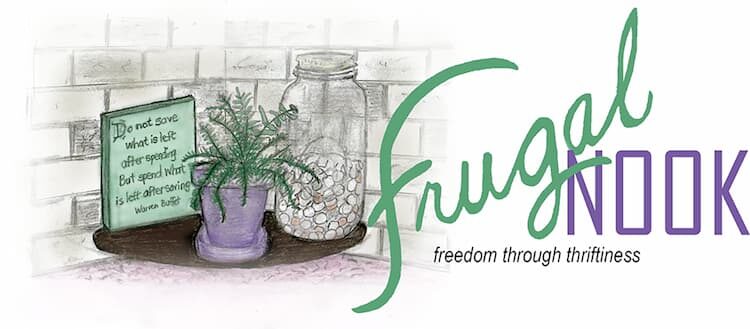











The top of the bargain food page is all the carbs/grains. Much of the rest is Keto friendly. I’m one of those guys that never gains weight. My wife is on Keto for health reasons. I can eat most anything. She sometimes catches me in the pantry stuffing my face with Captain Crunch. I miss my carbs. Great list!
Thanks, Bruce! I was on Keto for quite some time for health reasons myself. I missed carbs too, but it was fun to have all the cheese cake I wanted!
Great tips for the cheapest healthy foods. I am so tired of paying so much at the grocery store. I need all the info. I can get on saving money.
Thank you, Ann!
We love rice and beans! Great read.
Thanks, Antoinette!
Thank you for this comprehensive list of the cheapest foods to buy. Meal planning is such a great tool to save time and money. I love to meal plan and use the ingredients I have on hand.
You’re welcome, Debbie!
With the forever-rising cost of food due to inflation, this blog has definitely shed light on cheap food items that are healthy as well. Thanks for sharing.
I’m so happy you liked my post and find it helpful, Kevin!
Interesting!! I am always looking for ways to cut down on my grocery bill. Thanks for the tips! I love some of these foods.
You’re welcome! I’m very happy that you found the post to be helpful!
To find the cheapest food I just go to Aldi’s lol
That’s not an option for everyone. There are no Aldi’s in the state I live in, but I did enjoy using it when I lived in the NE.
Thanks for writing this article about cheaper yet healthy foods to buy. We buy a lot of oats, beans and rice. I can make a lot of meals with these items. I love stuffed bel peppers. I need to make that dish again soon!
Great advice! Cooking from scratch saves such a lot of money and it’s healthier!
Great list! Many are on my weekly grocery list. Funny how the healthiest foods tend to be the cheapest. Another reason to eat healthy.
This is such a helpful resource for purchasing the cheapest food. I buy a lot of pasta and rice as it goes such a long way for a reasonable price!
This is such a great list. Food prices are ridiculous, so this list can save us money.
Great post! Thank you for the tips. Very helpful for me.
Love this list! So many of my favorite foods are on here. I am obsessed with frozen berries and love using them all the time.
Such a comprehensive list of ideas on how to cut costs on our grocery bill and still eat well! I do need to start planning more meals with legumes for healthy and less expensive proteins.
I need to do the same, Stephanie! I’ll be on the lookout for recipes with beans.
Thank you SO MUCH for this! Groceries are getting out of control, so I will most definitely be using this guide.
You’re welcome, Beth! I’m so glad you found the post helpful!
I am always looking for ways to save when grocery shopping, thanks for putting this together and sharing it.
You’re welcome, Luna!
These are great tips! Grocery shopping has been getting to be super pricey lately and it’s important to find ways to save. I love that you listed a lot of options to choose from and that they are all healthy!
Thanks, Maureen
Great list! Some of these food items here in MI have gone up a lot. Everything is so dog gone high but it’s good to know that there are still some foods and vegetables to help people save. After all every little bit helps!
Thanks, Lisa! Thanks for reading and for your comment!
This blog post really resonated with me! It’s packed with practical tips on saving money on food while still eating healthy and delicious meals.
I’m so glad you liked the post, Renata! Thanks for reading and for your comment!
This is an interesting and useful post for anyone looking to cut the cost of their weekly groceries. It helps to know which items to consider buying.
Thanks for reading and for your comment, Melanie!
Food is so expensive lately! It is good to have some economical ideas to choose from and to add to my grocery list.
I’m glad you liked the post, Marysa!
I am always on the hunt for cheap grocery items. Given the rising cost of commodities, it helps us decide what items to buy for the household.
Thanks for reading, Ramil! I’m glad you found the post helpful!
This is a fabulous list of the cheapest foods to buy. Yes, food prices are rising, but some things come down and fluctuate. My family is in the restaurant business, so we track everything. The bottom line is to shop for nutritious whole foods to make things from scratch at home rather than buy processed junk.
Yes, Dana, the best way to save is to make food from scratch – so much cheaper than eating out or pre-made meals.
I would like to add more rice and beans to our diet, and it is good to see these items in the cheap food list. Also, barley and quinoa would be great for new sides. Thank you for your ideas!
You’re welcome, Olga!
There are Trader Joe’s stores in Florida, and I enjoy shopping there for almost everything. However, it may not be a viable option for everyone.
I don’t have one of those near me, Mila. Sounds like a great place to shop.
It’s amazing how a few simple ingredients can go a long way in creating delicious and healthy meals without breaking the bank. By utilising the list of the cheapest foods to buy, you can easily plan your meals and stay on budget while still getting all the nutrients you need. Planning ahead and being mindful of your food choices is a smart and responsible way to save money and take care of yourself at the same time.
Thanks for stopping by my blog and reading my post, Sonia
I’ve always wondered what are the factors of having expensive food. These are great recommendations.
Thanks, Fransic!
Thank you for this list of 57 budget foods. Even when you’re not broke, it’s a good idea to have budget-friendly foods on hand. I appreciate the list!
Good point, Lisa! Thanks!
Thank you for providing some great ideas for the cheapest food to buy when we’re broke. I appreciate all the great tips so we can better budget wisely – especially with all the high inflation.
You’re welcome, Debbie!
This is such an excellent post! I am so glad you mention buying fresh fruits & vegetables when they are in season to save money. Most fruits & vegetables can be frozen, dehydrated, canned, etcetera so they can used during the off season. Huge savings!
Thanks, Amy! I’m so glad you think the post is excellent!
Such a great post! As someone who is trying to eat healthy, lose weight and stick to a budget, this was so helpful and very detailed! Thank you so much for this information super helpful!
I’m thrilled you’ve found the Cheapest Food to Buy post so helpful, Natalie!